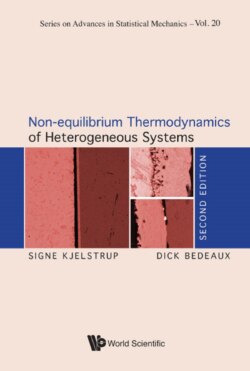Читать книгу Non-equilibrium Thermodynamics of Heterogeneous Systems - Signe Kjelstrup - Страница 11
Chapter 2 Why non-equilibrium thermodynamics?
ОглавлениеThis chapter explains what the field of non-equilibrium thermodynamics adds to the analysis of common scientific and engineering problems. Accurate and reliable flux equations can be obtained. Experiments can be well defined. Knowledge of transport properties gives information on the system’s ability to convert energy.
The most common industrial and living systems have transport of heat, mass and charge, alone or in combination with a chemical reaction. The process industry, the electrochemical industry, biological systems, as well as laboratory experiments, all concern heterogeneous systems, which are not in global equilibrium. There are four major reasons why non-equilibrium thermodynamics is important for such systems. In the first place, the theory gives an accurate description of coupled transport processes. In the second place, a framework is obtained for definition of experiments. In the third place, the theory quantifies not only the entropy that is produced during transport, but also the work that is done and the lost work. Last but not least, this theory allows us to check that the thermodynamic equations we use to model our system are in agreement with the second law.
The aim of this book is to give a systematic description of transport in heterogeneous systems. Non-equilibrium thermodynamics has so far mostly been used in science [23, 24, 30]. Accurate expressions for the fluxes are now required also in engineering [32, 45, 72]. In order to see immediately what non-equilibrium thermodynamics can add to the description of real systems, we compare simple flux equations to flux equations given by non-equilibrium thermodynamics in the following four sections.
